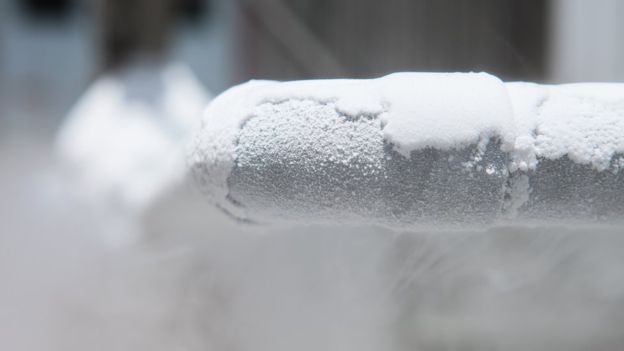Cryogenic hardening is a process that uses cryogenic temperatures – temperatures below −150 °C (−238 °F ) to strengthen and enhance the grain structure of a metal. Cryogenic treatment of certain metals is known to provide three beneficial effects:
- Greater durability: Cryogenic treatment helps to promote the transformation of retained austenite present in heat treated steels into harder martensite steel. This results in fewer imperfections and weaknesses in the steel’s grains structure.
- Improved wear resistance: Cryogenic hardening increases the precipitation of eta-carbides. These are fine carbides that act as binders to support the martensite matrix, helping to resist wear and corrosion resistance.
- Stress relief: All metals have residual stress that is created when it solidifies from its liquid phase into a solid phase. These stresses can result in weak areas that are prone to failure. Cryogenic treatment can reduce these weaknesses by creating a more uniform grain structure.
Process
The process of cryogenically treating a metal part involves very slowly cooling the metal using a gaseous liquid nitrogen. The slow cooling process from ambient to cryogenic temperatures is important in avoiding thermal stress.
The metal part is then held at a temperature of around −190 °C (−310 °F) for 20 to 24 hours before heat tempering takes the temperature up to around +149 °C (+300° F). This heat tempering stage is critical in reducing any brittleness that may be caused due to the formation of martensite during the cryogenic treatment process.
Cryogenic treatment changes the entire structure of a metal, not just surface. So the benefits are not lost as a result of further processing, such as grinding.
Because this process works to treat austenitic steel that is retained in a component, it is not effective in treating ferritic and austenitic steels. It is, however, very effective in enhancing heat-treated martensitic steels, such as high carbon and high chromium steels, as well as tool steels.
Besides steel, cryogenic hardening is also used to treat cast iron, copper alloys, aluminum, and magnesium. The process can improve the wear life of these types of metal parts by factors of two to six.
Cryogenic treatments were first commercialized in the mid-to-late 1960s.
Applications
Applications for cryogenically treated metal parts include, but are not limited to, following industries:
- Aerospace and defense (e.g. weapons platforms and guidance systems)
- Automotive (e.g. brake rotors, transmissions, and clutches)
- Cutting tools (e.g. knives and drill bits)
- Musical instruments (e.g. brass instruments, piano wires, and cables)
- Medical (e.g. surgical tools and scalpels)
- Sports (e.g. firearms, fishing equipment, and bicycle parts)
Source: https://www.thebalance.com/cryogenic-hardening-2340006




